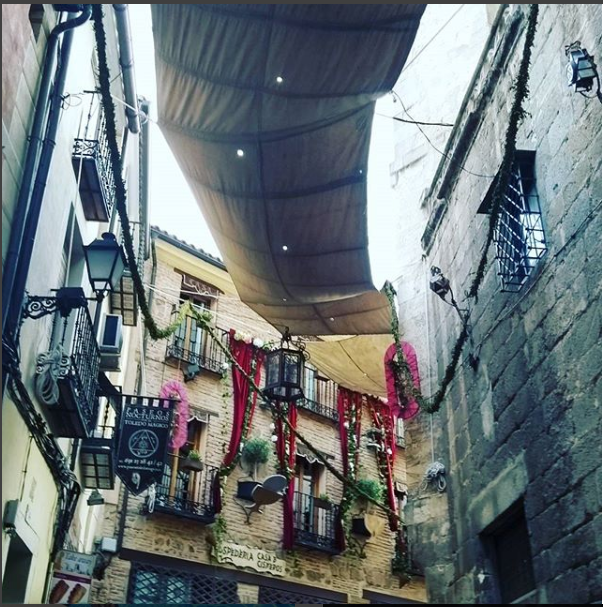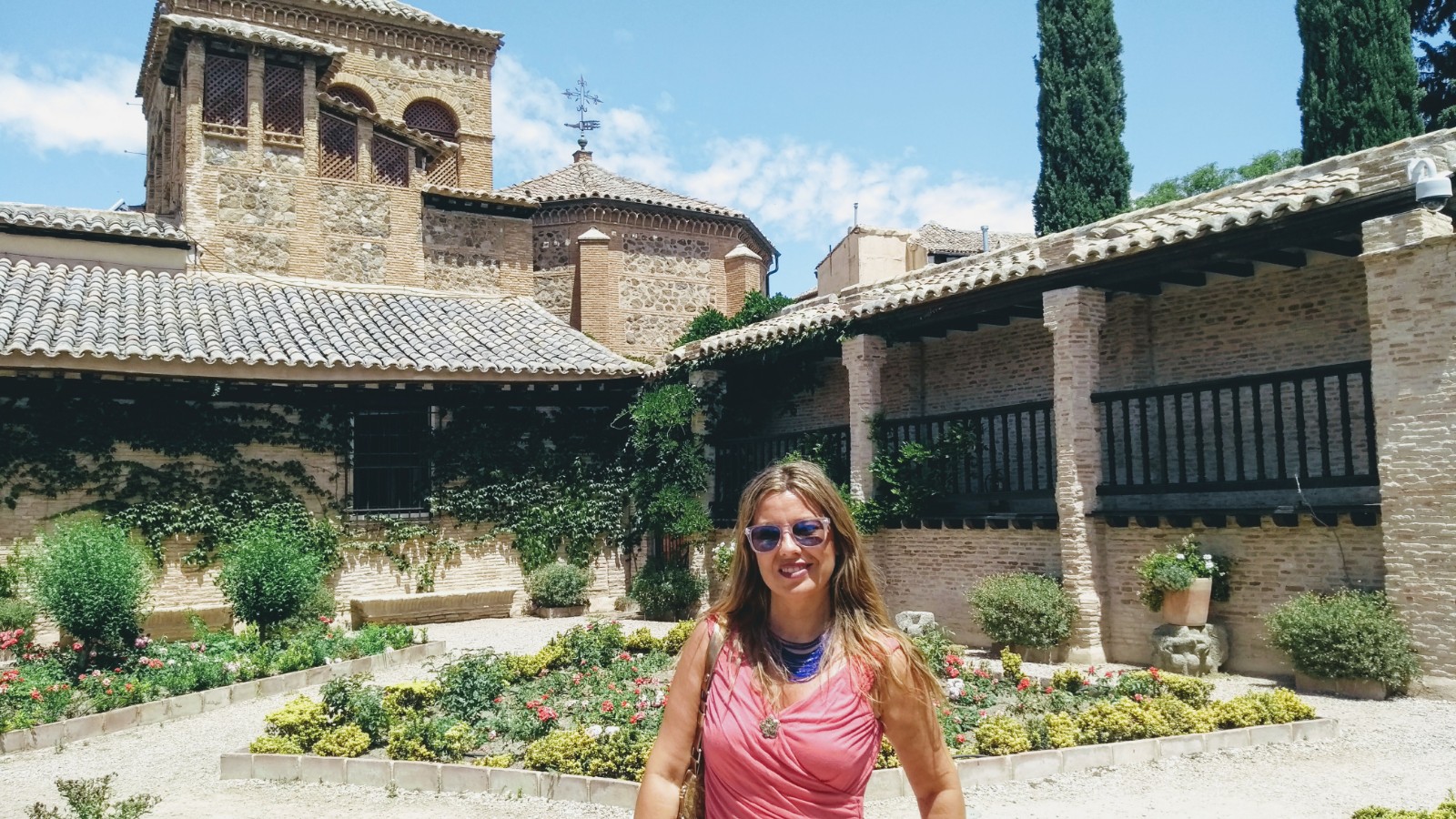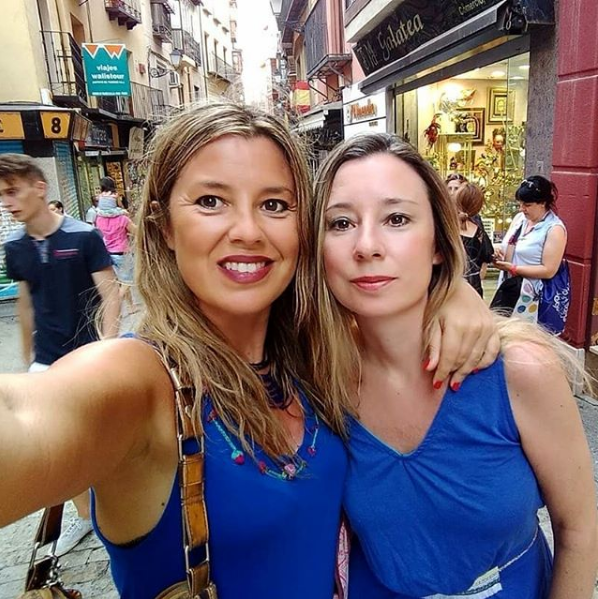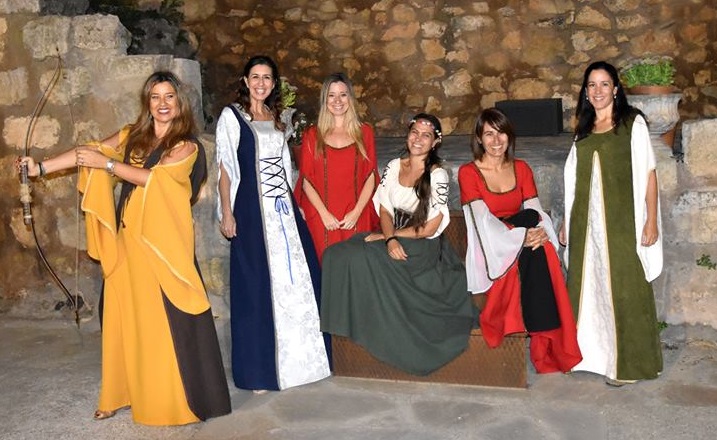Hello there!
Today you will be reading about Toledo, the City of the Three Cultures.
Needless to say it is one of the most beautiful and interesting cities in Spain. In fact, Toledo was a city which perfectly mingled the three cultures (Jewish, Musslim & Christian) to coexist in peace, in particular during 13th C, under the rule of King Alfonso X the Wise.
Introduction
In this blog post, I will brief you about a bit of the history of Toledo and in particular, I will focus on Toledo Jewish quarter, where you may visit the Synagogue of El Tránsito & Sephardic Museum, Torture Museum, Greco Museum & Church of Santo Tomé.

View of Toledo city from afar
Visiting Toledo is one of the must-do’s if passing by Madrid and staying around for a couple of days. I must say that I have not yet met anyone foreigner or local who have not fallen for the fantastic cultural & historic background of Toledo..
Toledo was declared a World Heritage Site by UNESCO in 1986 for its extensive cultural and monumental heritage and historical co-existence of Christian, Muslim and Jewish cultures.
Toledo was Christian since the 4th century, being part of the Roman Empire, all through to the «Reconquista» in the 15th C.
Toledo is known as well as as the «Imperial City» for having been the main venue of the court of Charles V, Holy Roman Emperor Mid, also known as Charles I of Spain throughout the 1st half of 16thC.
How to get to Toledo
Toledo has a wide range of places to see, so it is most advisable to stay at least one night and devote 2 full days to explore the city.
Getting here is easy, handy & comfy by train, on the so called AVE, High Speed Line, with departure times approx every 40 minutes from Madrid Atocha Train Station. The journey takes only 34 minutes and it costs 10 € /journey. The journey is operated by RENFE and the distance covered is around 75 kms.
Mosslems, Jews & Christians

Map of Toledo. The jewish quarter in brown highlight
Strolling around in Toledo, the City of the Three Cultures, seems like reading a book of history. You will be stepping on Roman ruins, Mosslim architecture or passing by Jewish Synagogues in 10 meters distance.
To me, one of the most interesting places to visit in Toledo is the Jewish Quarter.
Sefarad (Western Jerusalem) was the name the Jews gave to Spain, being Toledo the capital city. For more details of the Jewish history in Spain, click here.
There are some written evidence that the Jews arrived in the Peninsule during the Roman occupation, around 4th C, but the accurate date of arrival is unknown.
As early as 8thC, faced with repression, the Jews greeted the Arab invaders with open arms, as they were their saviours after the fall of the Visigoth regime. The occupation of the country by Mosleen troops happened in the 8th C (711) through to 1492, when they were sent out of Granada, the last islamic state, by the Catholic kings and their Christian kingdoms. Queen Ferdinand and Queen Isabella ordered the expulsion of an estimated 800,000 Jews from the country, and thus put an end to the largest and most distinguished Jewish community in Europe.
From the reign of Alfonso X The Wise to the Spanish Inquisition
The reign of Alfonso X the Wise (13th C) was the one which entailed the greatest prosperity and splendour for the Jewish community of Toledo. Their situation is attested to by the amount of taxes the aljama paid in 1284: one million maravedís. During his reign, the Jewish quarter of Toledo became known for its scale, the luxuriousness and beauty of its public buildings and the intellectual quality of its rabbis. The Toledo Translators’ School brought together the group of Christian, Jew & Moslem scholars which undertook very important scientific and cultural work in Toledo, particularly in the reign of Alfonso X the Wise (1252-1284) when it attained its greatest splendour.

Calle del Comercio, one of the main streets of Toledo leading to the Cathedral. Foto de Barbiegirl Travels Arts
The aggressiveness of the Christians to Jews and Moslems during the Reconquest (from 770 to 1492) became ever more pronounced and resulted in the proclamation of a series of ordinances against them in 1451 .They were required to obey a series of restrictive measures such as the prohibition to walk around the streets at night, enter churches or monasteries without authorisation, leave their houses during Christian festivities as well as the obligation to wear distinctive signs sewn into their clothes.
King Charles V was born in 1500 as the eldest son of Philip the Handsome and Joanna of Castile in the Flemish city of Ghent, which was part of the Habsburg Netherlands. Charles V was crowned King of Spain in 1516 but also King Of Italy , Germany and King of the Holy Roman Empire. The city of Toledo was the imperial capital and main seat of Charles I or Charles V, Holy Roman Emperor, and his court until his abdication in Sept 1556 as Holy Roman Emperor in favor of his brother Ferdinand.

Toledo Cathedral. It was built as of 1226 under the rule of Fernando III till the end of xv Century, under the rule of the Catholic Kings. Foto de Barbiegirl Travels Arts
The Spanish Inquisition had been established in part to prevent conversos from engaging in Jewish practices, which, as Christians, they were supposed to have given up. However, this remedy for securing the orthodoxy of conversos was eventually deemed inadequate, since the main justification the monarchy gave for formally expelling all Jews from Spain was the great harm suffered by Christians fromthe Jews, who always attempted to seduce faithful Christians from the Holy Catholic Faith. The Inquisition was finally abolished during the domination of Napoleon and the reign of Joseph Bonaparte (1808–1812). In 1813, the liberal deputies of the Cortes of Cádiz also obtained its abolition, largely as a result of the Holy Office’s condemnation of the popular revolt against French invasion.
The Jewish Quarter
The city of Toledo was made popular by the great painter Doménikos Theotokópoulos, aka “El Greco”, a greek painter from the Reinassance. He arrived in Toledo in 1577, at the age of 36 years old, and died there in early 17th C. In Toledo he became a profilic painter for Spanish King Philip the 2nd. His style is one of a kind and most of their masterpieces are still sheltered at the Greco Museum, located at the Jewish quarter of Toledo, first opened in 1911.

View of the Jewish quarter from the Greco house balcony. Foto de Barbiegirl Travels Arts
Trip to traveller: A visit to the Greco Museum is a must. The house garden looks fabulous, being a landmark and one of the most important buildings in the Jewish quarter. Entrance costs around 3 Eur. Sundays are free of charge. The building shelters most of their masterpieces.

Gardens of El greco Museums. The house where the painter used to live has been converted into a beautiful museum. Foto de Barbiegirl Travels Arts
Inside the Museum you can see the masterpiece of «View and Plan of Toledo», painted by El Greco and includes an image of his son. Painted circa 1610, the oil-on-canvas is owned and maintained by the Museo de El Greco (the El Greco Museum) in Toledo.
«View and Plan of Toledo», El Greco. Foto de Barbiegirl Travels Arts
Trip to traveller: Another painting that can still be seen in the city is the so called «The Burial of the Count of Orgaz»,to be found in Church of Santo Tomé on the Jewish quartier.

The Burial of Count Orgaz. Foto de Barbiegirl Travels Arts
El Greco was commissioned to paint ‘The Burial of the Count of Orgaz» by Andrés Núñez, the local Parish priest of the church of Santo Tomé. The painting was to be for the Chapel of the Virgin at the Church of Santo Tomé, El Greco’s very own church.
The legend says that Don Gonzalo Ruíz who was a resident of Toledo and a Señor of the town of Orgaz, died in the year of 1312. On his death, the man left a considerable amount of money to the Church of Santo Tomé in order to enable the enlargement of the church.
Due to this charitable and noble act, at his funeral, Saint Stephen and Saint Augustine descended from Heaven and buried Don Gonzalo Ruíz with their own hands, in front of the other amazed funeral guests.
The painting is therefore divided into two distinct sections: Heaven and earth. The upper heavenly section is represented with swirling clouds and ethereal, elongated figures. However the lower earthly section is more rational, darkly coloured and the figures are correctly proportioned. The two sections are joined together by the people in the painting as well as the tall torches and crosses carried by the figures. On earth, Saint Augustine and Saint Stephen, wearing gold and red robes, lean over the armour clad Count of Orgaz. El Greco painted the Count’s armour as reflecting the colours of the Saints’ clothes. El Greco also included himself and his son, Jorge Manuel, in the painting.
When walking around the Jewish Quarter of Toledo, don’t overlook the Synagogue of El Tránsito & Sephardic Museum, where you will discover the customs of the Sephardic Jews since the arrival of the Jews in the Roman Empire (approx 4thC) to the Christian Preaching campaign in the 15-16thC. Remember that entrance in free on Sundays and only costs about 3 Eur during weekdays.

This is me in the Jewish quarter of Toledo. Foto de Barbiegirl Travels Arts
Trip to traveller: Inside the Jewish quarter, you may also see the torture museum where you’ll have the opportunity to observe the exhibition of «Ancient Instruments of Torture» divided into five thematic sections which will offer you a brilliant visual tour into the history of one of the most feared courts of history.
Other Toledo landmarks
As a matter of fact, the urban structure of Toledo is Arab, with its narrow, winding streets. The houses have roofs which almost touch and all have a beautiful indoor courtyard. These are buildings that enclose the public view from their most precious jewels: tiled fountains and gardens filled with flowers and trees.
Cathedral of Saint Mary
The old mosque was on the current site of the Primate Cathedral of Saint Mary of Toledo but it seems that there was a remarkable building, only spacious to accommodate all the male inhabitants of the city. The Cathedral is awesome, built in the 13th-century, is considered one of the High Gothic cathedrals.
Toledo Cathedral. Foto de Barbiegirl Travels Arts
Alcazar of Toledo from afar. Foto de Barbiegirl Travels Arts
Alcázar of Toledo
The Alcázar of Toledo is a stone fortification located in the highest part of Toledo. Once used as a Roman Palace in the 3rd C, Abd ar-Rahman III raised an al-qasr (fortress) here in the 10th century and was later restored under Charles I (Holy Roman Emperor Charles V) and his son Philip II of Spain in the 1540s.
In 1521, Hernán Cortés was received by Charles I at the Alcázar, following Cortes’ conquest of the Aztecs.
The Alcázar was heavily damaged during the siege of the garrison by loyalist militias at the start of the civil war in 1936. The soldiers’ dogged resistance, and the famous refusal of their commander, Moscardó, to give it up in exchange for his son’s life, made the Alcázar a powerful nationalist symbol.Rebuilt under Franco, it has been reopened as a vast military museum.
Zocodover Square. Foto de Barbiegirl Travels ArtsZocodover Square
Zocodover Square is the main square of Toledo, and its very heart. It was the ancient Arabian market (zocodover means «place of animals»). It’s an ideal place to take a break after visiting the Alcazar or the Cathedral and also a hub for catching the bus or riding a tourist train or just take a seat a watch the life goes by.
This square is near the highest point of the old city, in the north-east corner, just a few metres from the Alcazar. There are a number of cafes, and the buildings above appear to be mainly offices.
The area of the Alcázar, adjacent to the Puente de Alcántara, had walls that separated the citadel itself, its garrison and palaces, the rest of the city.

View of Puente de Alcántara, joining the two banks of the Tagus River. Foto de Barbiegirl Travels Arts
The most obvious legacy is omnipresent Moorish aesthetics in architecture and decoration with the use of brick, masonry, interlocking the various arches, the wooden ceilings and rich plasterwork, used for centuries in all types of buildings , including the cathedral.
Next time I will write about the Magical side of Toledo, an epicenter of the riddles and mysteries of the High magic, medieval esotericism, of Alchemy, Kabbalah, and Necromancy. Also from Templar legend and the saga of the Grail. Toledo, city of legends and myths, caves and crypts, witches and sorcerers, and centuries-old mummies banned books. In other words, Toledo, a city of magic and mystery.
My sister and me thank you for reading up to the end of this long entry, Toledo, the City of the Three Cultures, which I hope has been of great interest. If you wish to read on more about Weekend get aways in Spain, just click on here

Hermanas en Toledo. Foto de Barbiegirl Travels Arts
See you soon!!!


















3 comentarios
We stumbled over here from a different page and thought I might check things out.
I like what I see so i am just following you. Look forward
to looking into your web page again.
El mapa que tienes es de Cordoba, no de toledo
Muchas gracias por el apunte. Ya está cambiado.
Saludos,
Barbara